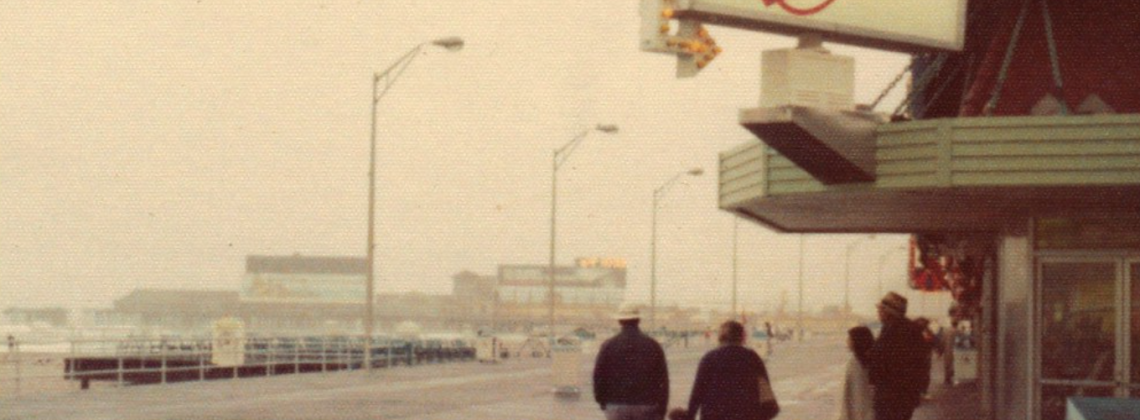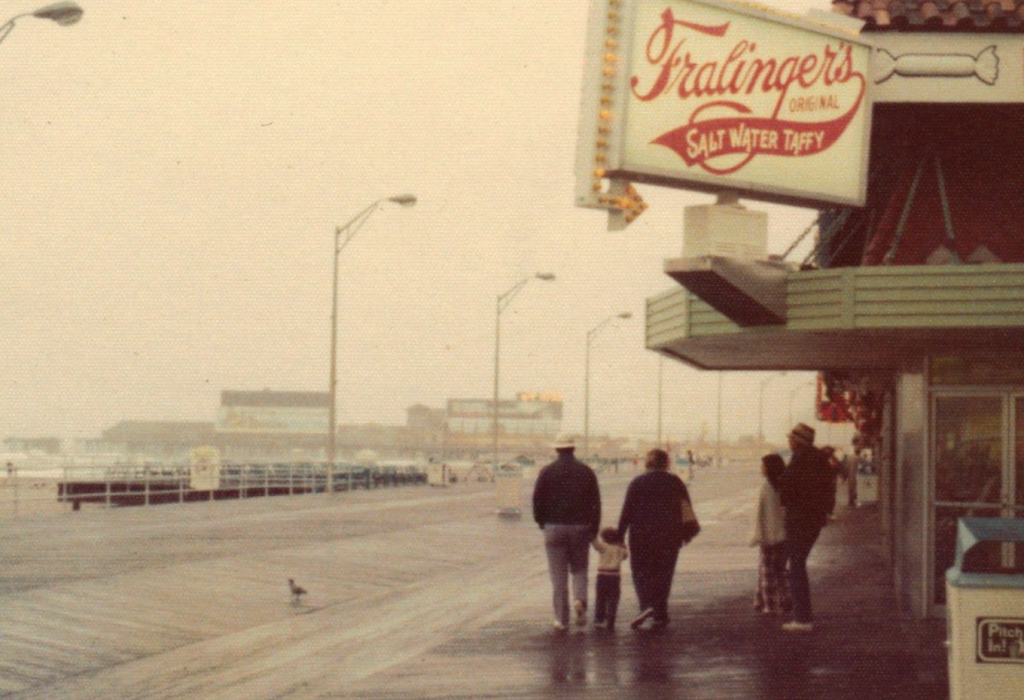

Growing up New Jersey working class in the 1970s
Last year I started writing a memoir. Due to other demands, I only managed to write one chapter. For my next several Current features I will be sharing excerpts from that chapter. Read the first installment here and the second installment here and third installment here.—JF
I spent most of my childhood, when I wasn’t in school, playing outside. My mother frowned upon us watching television during the day and, to be honest, we never really had an appetite for it. We spent our free time in the woods, in the fields, and exploring the family property on Turkey Mountain. We played wiffle ball and baseball on the street, built BMX-style bikes out of parts we found at the local junkyard, and—even though we lived on a cul-de-sac with no traffic—occasionally tried selling cold sodas and bags of chips in front of the house in a lemonade-stand type of operation. I played little league baseball until eighth grade. It took me that long to realize that I couldn’t hit and had no depth perception in the outfield. But I loved the game and thought I might pursue a career as a sports journalist or announcer.
There were very few books in our house. I don’t think we even had a bookshelf. The only books I remember reading were those assigned by a teacher. I am sometimes envious of my wife when she tells stories of her rich literary life as a girl, especially her immersion in Christian writers such as C.S. Lewis and J.R.R. Tolkien. While she was reading the classics I was watching Happy Days and The Brady Bunch and eavesdropping on my mother’s soap operas. I have spent a lot of my adult life trying to read all the books I never read as a kid. I only started reading fiction on a regular basis about ten years ago.
When my family did read it was the New York Daily News and our local newspaper, The Morristown Daily Record. I loved the fat Sunday editions of these papers because the sports sections were longer, and the comics were in color. My Aunt Pat and Uncle Lou gave me a subscription to Sports Illustrated after I got my tonsils out in first grade. I awaited its arrival in our mailbox every Thursday afternoon, but I usually just looked at the photographs and read the “19th Hole” column in the back of the magazine.
I spent more time reading the Sporting News—also a gift from Aunt Pat and Uncle Lou—because this tabloid-style journal was loaded with statistics. I studied these stats, copied them into a spiral notebook, and tried to update them in real time as I watched the Mets on WWOR-TV or listened to the game on the radio. I also used these statistics in the imaginary baseball games I played in our backyard. At one point my neighbor was concerned about me. How could this kid spend hours just swinging a bat, doing pitching windups (à la Tom Seaver, Jerry Koosman, Jon Matlack, Tug McGraw), and talking to himself? What she didn’t know was that I was honing my skills to become the next New York Mets broadcaster!
Somewhere along the way my interest in sports journalism expanded to include investigative journalism. I owe almost all my interest in this area to a book report on All the President’s Men, the story of Bob Woodward and Carl Bernstein’s uncovering of the Watergate scandal. This led me to the opinion pages of the Daily News, where I started reading the hardscrabble and gritty work of legendary New York columnist Jimmy Breslin. Woodward, Bernstein, Breslin, and my ongoing fascination with the sportswriters on the back pages of the New York tabloids prompted me to start my own newspapers using the family’s manual typewriter. I published little rags with names like “Fea Journal” and “The Montville Review.” My stories included headlines such as: “Strange Car Spotted at the Bottom of Turkey Hill Road” or “Pro-Wrestling News.”
These makeshift papers never made it too far outside of my bedroom, although I did join a few middle school friends, one who was an amazing sketch-artist, in churning out a publication called “Sports Journal.” We hawked it in the school hallways for ninety cents an issue. I think we sold about ten copies of the two issues we produced, but one of those buyers was our Social Studies teacher, who praised the project in front of the class. When I got to high school, I joined the staff of the school newspaper and eventually worked my way up to sports editor in my senior year. That led to a short gig covering middle school sports for our town’s short-lived weekly paper.
Since my father was an independent contractor there were seasons of plenty and seasons of scarcity. My parents never talked about money. We were not poor—there was always cash for school clothes and the occasional luxury purchase—but I could usually tell when things got tight. When I tell people that I was raised in a “working-class” family I am usually talking less about how much money we made, or about our relationship to organized labor, and more about culture. My family did not place a premium on higher education, never taught us middle-class manners and etiquette, and didn’t listen to National Public Radio. I had never set foot in a bookstore until I had to buy my first college textbooks at a conservative evangelical Bible college (more on that later). I grew up a stone’s throw from New York City and never visited a museum, saw a Broadway show, experienced the city’s fine restaurants, or shopped at Saks. When we did go into the city our destination was either Yankee Stadium or Shea Stadium. We resided in the shadow of the greatest city on the planet, but our everyday lives—defined by family, work, and local Catholic culture—were far removed from the cosmopolitanism of the Big Apple.
We took one week of vacation every year and always went to the same place: Ocean Beach on New Jersey’s Barnegat Peninsula. I like to tell people that Ocean Beach was the Levittown of the Jersey Shore. The small two- or three-bedroom bungalows for rent—no more than 500 square feet—were crammed together only inches apart, providing little privacy. Because the rents were reasonable, Ocean Beach attracted many working-class families in those days. We played miniature golf, drank Yoo-hoos, swam in the Atlantic, flew kites on the beach, built sandcastles, bought saltwater taffy, ate jelly donuts, played Skee Ball, and spent our quarters (saved up all year) trying to win prizes playing the honky-tonk boardwalk wheels of chance at nearby Seaside Heights. The Jersey shore was my paradise. In some ways it still is.
John Fea is Executive Editor of Current
Photo credit: fauxto_digit
I’m enjoying this John. You are a few years older than me, but I have a similar nostalgia for a simple childhood lived in the Upper Midwest. Your recollections are evoking a lot of memories.
Thanks, Chris.